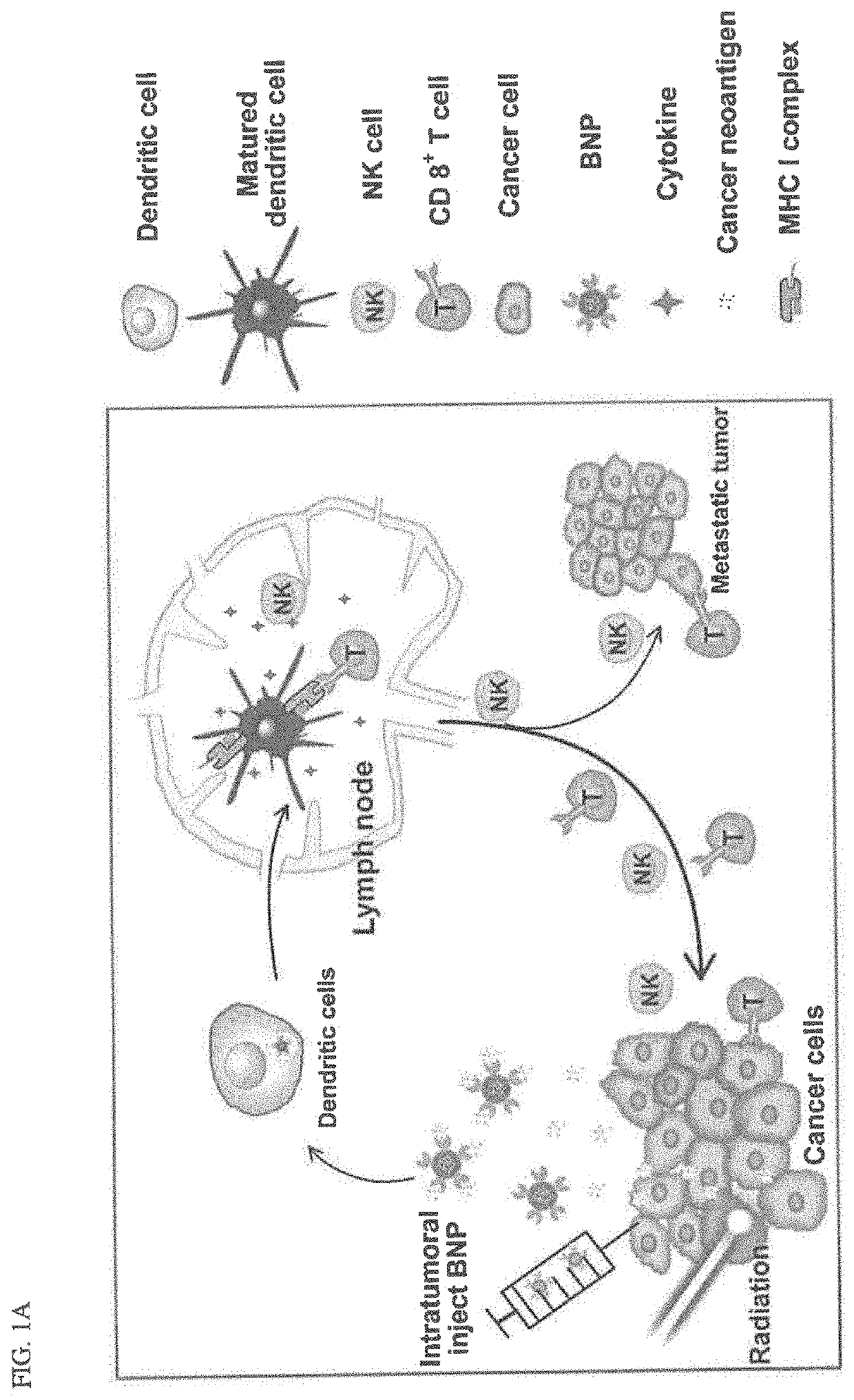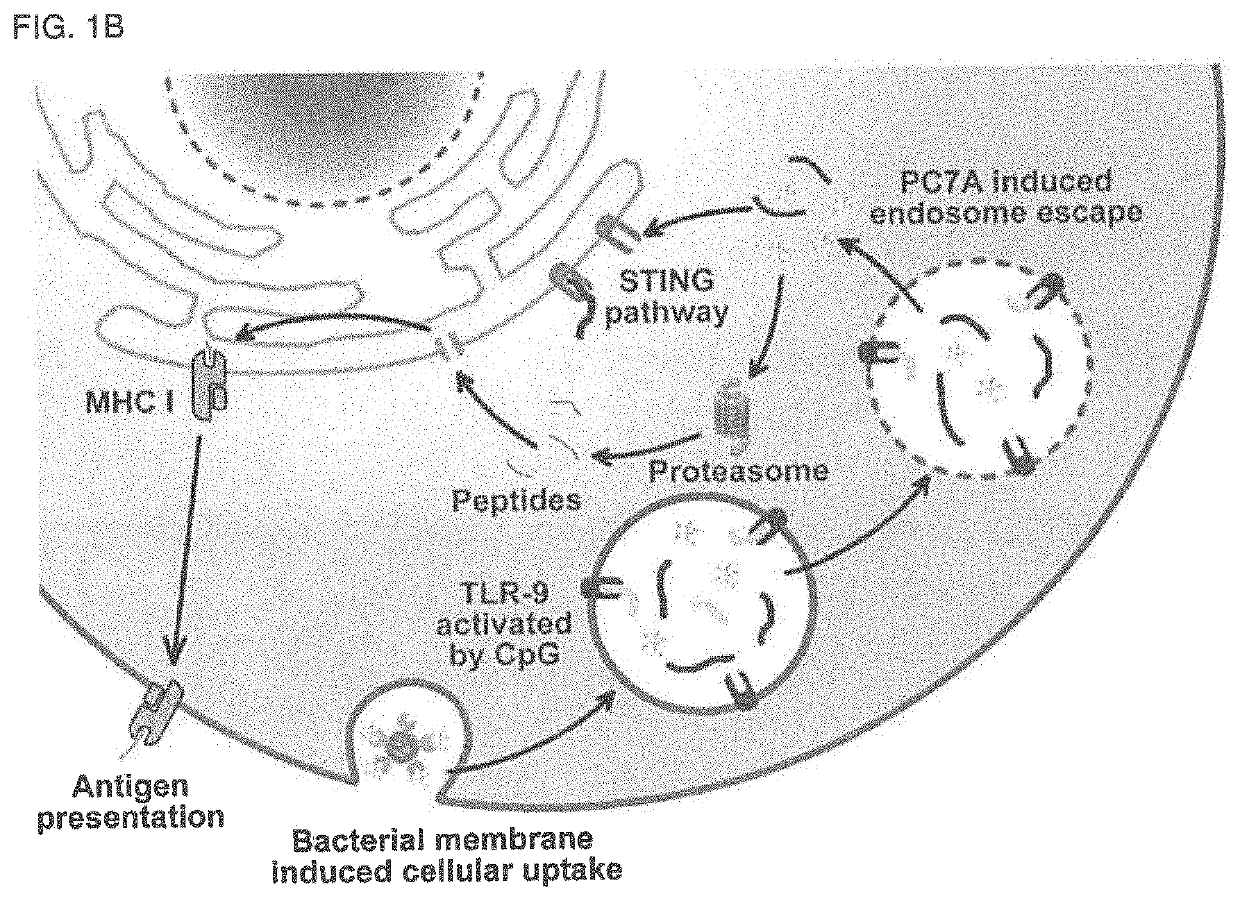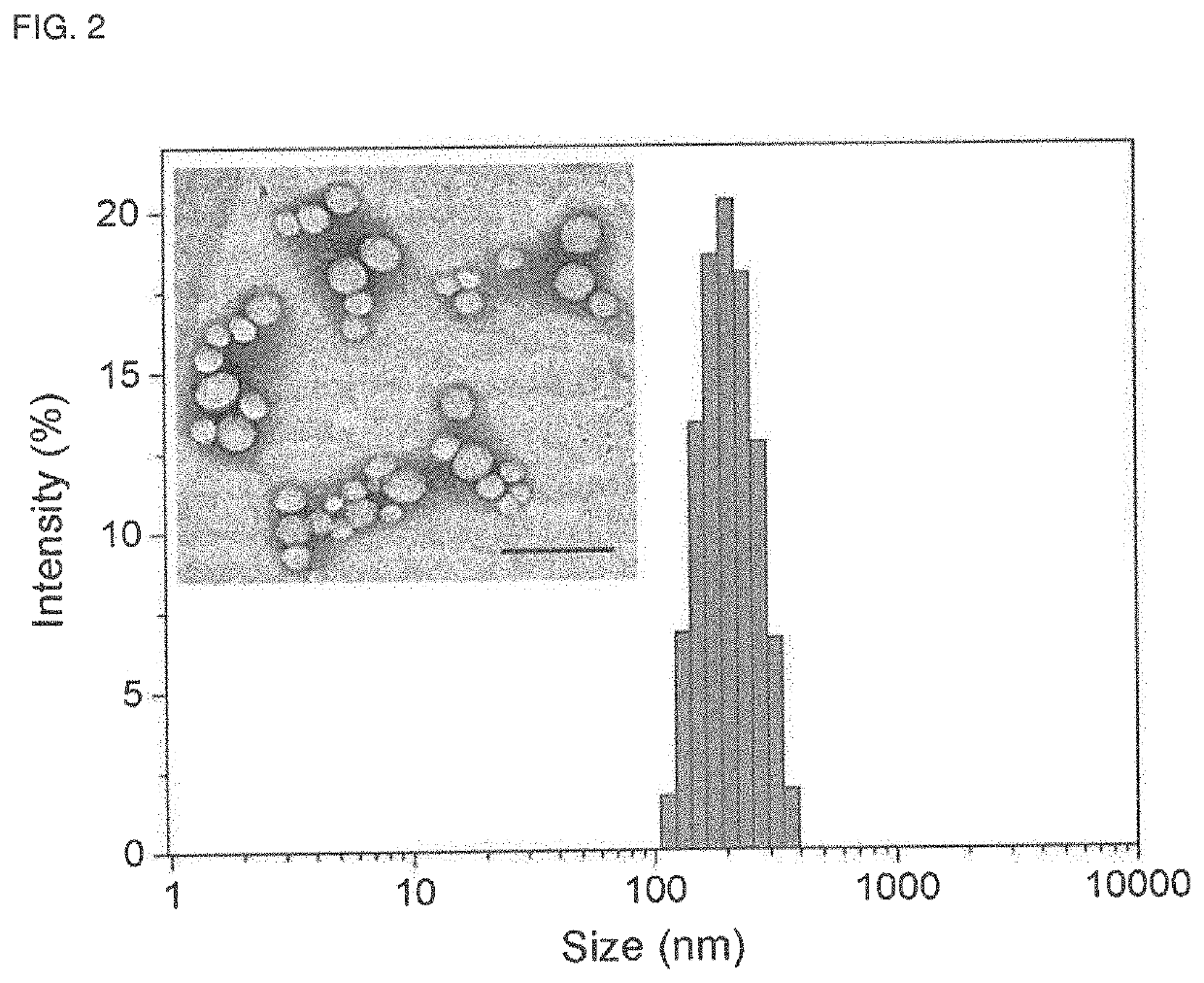Bacterial membrane nanoparticles as an immunotherapy system for cancer treatment
- Summary
- Abstract
- Description
- Claims
- Application Information
AI Technical Summary
Benefits of technology
Problems solved by technology
Method used
Image
Examples
example 1
of PC7A Polymer
[0043]Synthesis of Methacrylate Monomer.
[0044]The monomer 2-(hexamethyleneimino) ethyl methacrylate (C7A-MA) was synthesized according to previous reports (K. J. Zhou, Y. G. Wang. X. N. Huang, K. Luby-Phelps, B. D. Sumer, J. M. Gao, Angew Chem Int Edit 2011, 50, 6109). Briefly, 1H-azepine-1-ethanol, hexahydro- (5.0 g, 34.5 mmol) and triethylamine (TEA, 7.0 g, 69 mmol) was dissolved in 100 mL dried THF and cooled to 0° C. in an ice bath. Methacryloyl chloride (4.0 g, 38.5 mmol) was dissolved in 15 mL dried THF and slowly dropped into the previous solution. The reaction was moved to room temperature and stirred for 8 h, then filtered to remove TEA salt. The filtrate was condensed by rotary evaporation and further purified by flash chromatography (Hex:EtOAc=2:1). C7A-MA: 1H NMR (TMS, CDCl3, ppm): 6.1 (s, 111), 5.6 (s, 1H), 4.2 (t, 2H), 2.8 (s, 2H), 2.7 (s, 4H), 2.0 (s, 3H), 1.8 (s, 4H), and 1.6 (s, 4H).
[0045]The monomer 2-(tert-butoxycarbonylamino) ethyl methacrylate (Bo...
example 2
Growth and Membrane Extraction
[0052]M. smegmatis (strain mc2 155) was grown in Middlebrook 7H9 broth with the addition of a 10% (vol / vol) FD019 supplement at 37° C. with aeration and shaking. Cells were harvested at an OD600 of around 3, collected with a 4000 G centrifuge, and washed twice with distilled water.
[0053]The bacterial membrane was extracted as follow. A ˜2 g bacteria pellet was dispersed in 40 mL Tris HCl buffer (20 mM, pH 8.0) containing 15 mg / mL lysozyme. It was incubated in a 37° C. shaker for 3 h. After adding 400 mg SDS, the cells were further broken down with a probe sonicator in an ice bath for 10 min and then lyophilized. The dried bacteria lysate was suspended in a chloroform-methanol-water solution (CMW; 30:15:1, v / v / v), placed on a shaker at 37° C. for 1 h, and then filtered by Millipore HVLP Durapore® membrane (0.45 gun). The residue was extracted by CMW two more times and then the filtrate was combined and dried under vacuum. The bacterial membrane was dispe...
example 3
on of the BNP
[0054]Preparation and characterization of PC7A / CpG polypex.
[0055]Polyplex was freshly prepared by adding the polymer solution at different concentrations (1:1, 2.5:1, 5:1, 10:1, 20:1) into 1.2 mg / mL CpG solution (1:1, v / v). The mixture was vortexed for 10 seconds and incubated at room temperature for 15 min before use. Agarose gel electrophoresis was employed to optimize the PC7A to CpG weight ratios at different pHs (6.5, 7.4) using a 1% agarose gel in a TAE (Tris-acetate-EDTA) buffer solution with a current of 110 V for 30 min. The retardation of the complexes was stained by Sybr safe and visualized on a UV illuminator (Bio-Rad Baloratories, Inc., Hercules, Calif., USA). Based on the electrophoresis results (data not shown), CpG was completely complexed at a pH of 7.4 when the polymer / CpG weight ratio reached 2.5 and above.
[0056]Preparation and Characterization of BNP.
[0057]Seven microliters of a 1.5M sodium carbonate solution and 100 μL freshly prepared polyplex solu...
PUM
| Property | Measurement | Unit |
|---|---|---|
| Hydrodynamic diameter | aaaaa | aaaaa |
| Weight ratio | aaaaa | aaaaa |
| Responsivity | aaaaa | aaaaa |
Abstract
Description
Claims
Application Information
 Login to View More
Login to View More - R&D
- Intellectual Property
- Life Sciences
- Materials
- Tech Scout
- Unparalleled Data Quality
- Higher Quality Content
- 60% Fewer Hallucinations
Browse by: Latest US Patents, China's latest patents, Technical Efficacy Thesaurus, Application Domain, Technology Topic, Popular Technical Reports.
© 2025 PatSnap. All rights reserved.Legal|Privacy policy|Modern Slavery Act Transparency Statement|Sitemap|About US| Contact US: help@patsnap.com



